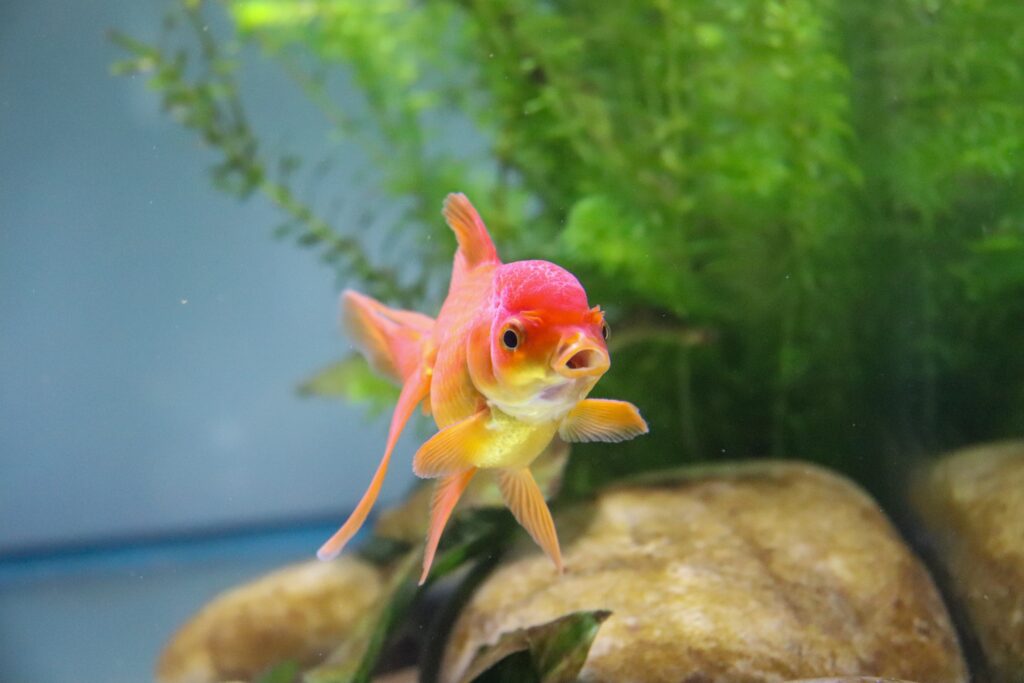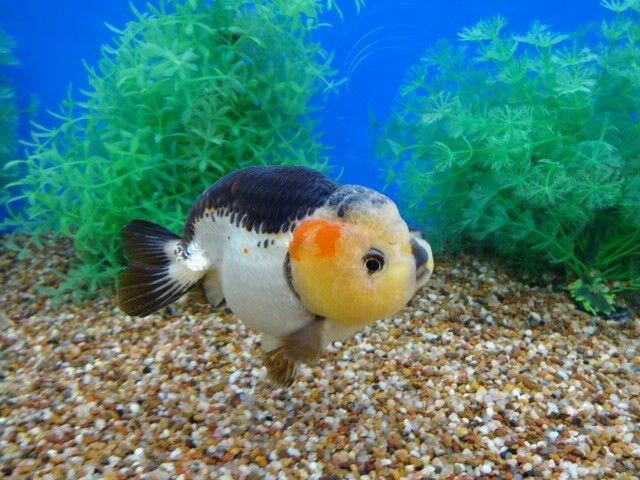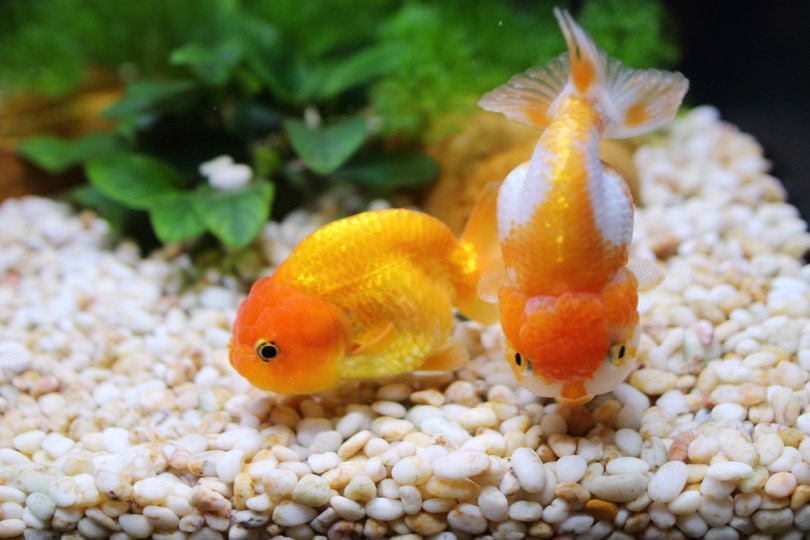
Dive into the vibrant world of goldfish colors, a spectrum as diverse as a rainbow after summer rain. Uncover the secrets behind their stunning hues, guided by genetics and influenced by more than just luck.
As with our own nutrition and lifestyle, a goldfish’s diet and environment play starring roles in their color development. But wait, there’s more – choosing their grub wisely and setting up a cozy, suitable habitat are also key.
Understanding Goldfish Colors

Let’s dive right into the vibrant world of goldfish colors. Take Brian, your average goldfish owner. He dips his fingers into the water, cotton candy and caramel apple in hand, and wonders aloud, “Why is my Goldfish not as red as the apples?”
The Different Colors of Goldfish
Think of them as little swimmy rainbows – goldfish come in an array of colors. Trust me, they’ve got swag! From resplendent reds to glorious golds, brilliant blacks, and even sentimental silvers – these cool critters can flaunt a mix of shades that could put any artist’s palette to shame! Now, onto the big question: why do they seem to change their jackets every now and then?
How Genes Influence Goldfish Colors
Their colors aren’t about mood swings or being fashionable (though, that would be amusing). It’s all down to genes and genetics – much like your cousin’s wild hair color that no one can account for. Genes, those little things inside your goldfish’s cells, decide the color of scales it is going to put on the runway. So, if Brian is yearning for a red hot chili goldfish, he’s got to hope that the genetic lottery bestows its blessings.
Well, enough about that. Now you know why your goldfish might not match your curtains. But wait, there’s more to it than just genes and genetics! Some external factors can also influence your goldfish’s color. So, grab your popcorn as we take the plunge into this ocean of knowledge in our next section: Factors Affecting Goldfish Colors.
Factors Affecting Goldfish Colors

Who knew that modish color patterns on your goldfish are not just about their genes? That’s right! The vibrant hues you marvel at are influenced by something equally practical – the food they eat and the spaces they swim in!
Role of Diet in Color Development
Believe it or not, the diet of your goldfish can play a big role in color development. It’s like how our obsession with much-maligned cheeseburgers can lead to a personal growth – so to speak. But in this scenario, your goldfish’s food can do more – it might turn Uncle Fins from a dahlia yellow to a sizzling scarlet! Feeding them color-enhancing foods can boost those bright hues. However, twist in the tale – regular goldfish food doesn’t usually do the trick. Seek out special color-promoting munchies instead.
Cue in the transition from proteins to pigments. Up next, we’ll peek into how Senorita Glub Glub’s fish condo might stir up a color storm.
Effects of Environment and Lighting
Environmental factors, including lighting, can be the unheralded hero in your goldfish’s color development. Much like us basking in the sun to get that sun-kissed skin, goldfish need light too. But ditch the beach plans! A few hours of light a day is all they need.
Controlled lighting helps retain goldfish pigmentation. Too much lights? It may lead to a metaphorical Goldfish’s Goth phase – colors going dimmer or darker! The aquatic environment plays an equal role. A well-maintained, clean tank will not only turn your goldfish into swimming Van Goghs but also keep them happier and healthier.
So much talk on colors and moods, you may wonder if lighting matters during a ‘fin’tervention. Hang in there, incoming, is an assorted scoop on enhancing goldfish colors.
Methods to Enhance Goldfish Colors

Now that we’ve dug into the nitty-gritty of goldfish skin tone genetics and the factors that affect their fabulous hues, let’s dive into some real action. Let’s figure out what you – the goldfish Glaminator – can do to enhance those stunning shades.
Choosing The Right Food
Did you know that the food your goldfish munches on can impact its color vibrancy? Imagine it’s like a reality show makeover – only it’s food doing the job. Choosing foods rich in natural color enhancers like Spirulina, canthaxanthin, and astaxanthin can help maintain and brighten your goldfish’s color. So, next time you hit the fish food section, remember, you’re shopping for not just food, but color potential!
Let’s swim onto the next method, shall we?
Creating A Suitable Habitat
I know your goldfish isn’t a home decor critic, but its habitat can play a crucial role in color optimization. Light intensity and color in the tank can affect goldfish pigmentation. More light can intensify colors while poor lighting may lead to a loss of vibrancy. Also, the color of the tank’s background can affect your pet’s color. Here’s a tip: darker backgrounds often intensify goldfish colors.
Now that we have discussed cuisine and decor, let’s look at the big guns – supplements.
Considering Supplements
Supplements are like haute couture for your goldfish, something extra to make them stand out in the tank. Supplements with carotenoids can boost your goldfish’s color naturally. These are substances found in foods like carrots, apricots, and algae. But remember, always talk to a vet before introducing any supplement in the diet of your gilded buddy.
All set now to make your goldfish the star of the tank. Now, let’s move on to understand more about “Goldfish Color Changes and Health.” You see, sometimes changes in color can also tell a tale about your fishy friend’s wellbeing.
Goldfish Color Changes and Health

Did you know goldfish are the chameleons of the aquatic world? These piscine Picassos can change their colors, giving the Kardashians’ hair stylists a run for their money! Now let’s dive deeper into the rainbow mystery that lies beneath your fish’s scales.
Significance of Color Changes
When your goldfish decides to swap its color palette, it’s trying to communicate. It’s like changing outfits, but instead of suggesting, ‘I’m feeling a bit punk rock today,’ it’s saying, ‘I might need some help over here.’ Some color changes are natural and harmless, linked to factors such as the onset of adulthood or seasonal variations.
But what if a color change is more like a red flag? Fishy, isn’t it? This takes us to our next intriguing point.
How Color Changes May Indicate Health Issues
Sometimes, your glittery buddy may take a trip to the dark side, quite literally. Darkening or lightening of colors, spots and patches, or drastic color changes may be your goldfish’s SOS signal. It could be indicative of disease, stress, poor diet, or suboptimal tank conditions.
For instance, sudden white or rusty patches could be a sign of fungal or parasitic infections. A fading color might hint at a little goldfish feeling blue due to high stress or inadequate nutrition. So your goldfish isn’t just about aesthetics, its vibrant colors are a barometer of its health!
We now understand why our fish might switch between its many couture collections. But how can you ensure your goldfish keeps flashing its finest fashions? Let’s glide into practical ways of maintaining your fish’s vibrant colors in the next section.
Practical Tips for Maintaining Vibrant Colors

Giddy-up Goldfish owners! Are your goldfish looking a bit lackluster? Getting more “washed-out pastel watercolor” vibes than a burst of vibrant Crayola masterpiece? No worries! We’ve got some foolproof, practical tips to keep your goldfish popping with color.
Regular Cleaning and Maintenance of the Tank
Cleanliness is next to Goldfish-iness! Or so we like to think. Your goldfish’s tank isn’t just their house – it’s their whole world! Imagine living in a world filled with your own poo, food remnants, and stale, unchanged water? Yuck (to say it mildly). So, give your fish a fresh shake at life by doing regular water changes, staying vigilant with tank clean-ups, and maintaining the filter. Trust us, this will help their colors shine and shimmer.
But hey, let’s not stop at cleanliness. Our fishy friends deserve more to keep their colors on point.
Ensuring Balanced Diets
Eat your greens, right? Well, fish don’t have moms to nag them about it, but that’s where you come in. Offering a balanced diet to your goldfish is the quickest way to ramp up their color. Choose high-quality pellets with vitamins and minerals to accentuate their hues, and don’t shirk on giving them their portion of fresh veggies.
Remember, a well-fed fish is a colorful fish! You may be curious about what types of food will be best for your goldfish. For that, we have a detailed list for you in our article on the 5 Best Diet Foods for Your Goldfish.
But wait! We have one more trick up our sleeves. You might wonder, “What does my goldfish’s happiness have to do with colors?” Well, dear reader, hold on as we dive into that.
Keeping Check on Goldfish’s Mental and Physical Health
Yes, Goldfish don’t write depressive poetry or mope around to signify sadness. But stress can dim their colors (talk about living colorfully, right?). Provide them with enough space to swim around, maintain good water quality, and keep an eye out for any sign of illness. Emotional well-being, satisfactory living conditions, and good health all contribute to a goldfish’s vibrant display.
And with that, we wrap up our practical tips guide for maintaining your goldfish’s colors. These may seem like small changes, but they can bring a whirlpool of difference in your finned pal’s life and color palette. So dive in and get started!
Wrap Up
As we’ve discovered, maintaining goldfish colors is a blend of art, science, and just a splash of TLC. Remember, a vibrant goldfish isn’t merely aesthetically pleasing, but a health-conscious critter too.
So, if you yearn for a glittering goldfish, consider their diet, habitat, and color shifts. Regular tank cleaning, balanced nutrition, and general health checks are also your golden ticket to a healthy, vibrant pet. Dive in and enjoy the journey!
Frequently Asked Questions (FAQ)
Question 1: What different colors can goldfish be?
Answer: Goldfish come in a variety of colors including orange, red, yellow, white, black, and even blue. They may be a single solid color, or a blend of multiple hues.
Question 2: How do genes influence the color of a goldfish?
Answer: Just like humans, a goldfish’s color is determined by its genetic makeup. The color genes inherited from its parents determine the potential colors a goldfish can display.
Question 3: Does my goldfish’s diet influence its color?
Answer: Absolutely! A balanced diet rich in color-enhancing ingredients like spirulina, shrimp, and certain vegetables can contribute to your goldfish’s vibrant coloration.
Question 4: Can a goldfish’s color be affected by its environment?
Answer: Yes, environmental factors such as lighting, tank color, and even the goldfish’s stress levels can influence its color. An ideal environment helps maintain vibrant colors.
Question 5: Can I enhance my goldfish’s colors naturally?
Answer: Certainly! Besides a balanced diet, you can also use supplements, choose the right lighting, and create a stress-free habitat to enhance your goldfish’s colors.
Question 6: Why is my goldfish changing color?
Answer: Color changes may be a natural part of a goldfish’s life cycle, a reaction to environmental changes, or a sign of health issues. If your goldfish changes color suddenly or dramatically, it’s best to consult a vet or aquarium specialist.
Question 7: How can I maintain the vibrant color of my goldfish?
Answer: Keeping the tank clean, providing a balanced diet, and checking regularly on your goldfish’s mental and physical health are key methods for maintaining vibrant goldfish colors.
Question 8: How does a color change indicate health issues?
Answer: Rapid or unusual color changes might be a sign of stress, illness, or poor dietary health. For example, if your goldfish turns white or loses its color, it might be due to inadequate diet or a parasitic infection.



